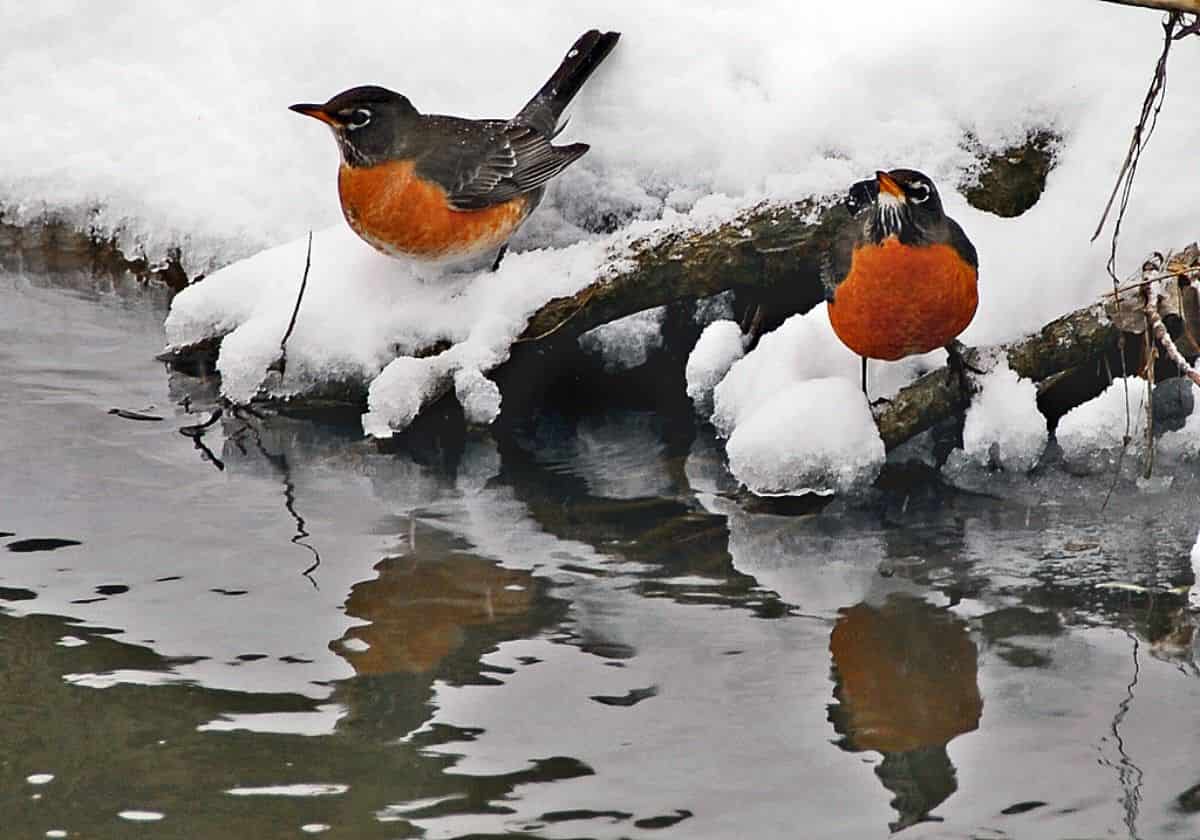Water is vital for birds in the winter, but also in the summer. Birds need water as a nutrient, building material, means of transport for oxygen and waste. The birds can easily meet their needs of water in temperate summers and winters. But in a harsh winter that lasts for weeks, that is impossible, and in a bone-dry and hot summer that is impossible.
A helping hand from people is indispensable to provide clean and fresh water in the winter when water freezes, and in the summer, when it is almost 40 degrees, to put down clean, cool, and cold water.
Birds need water
Birds are warm-blooded and the body temperature is around 40 degrees Celsius. Birds need water as a nutrient, building material, means of transport for oxygen and waste. Insectivores need less water than seedeaters because insectivores already get moisture from their food.
In the summer, water is also a great way to cool off at high temperatures. Birds can tolerate an ambient temperature of up to 44 degrees Celsius.
Reading Suggestion: Parakeet Names
Feathers as protection
Birds also bathe in summer and winter to make their feathers water-repellent. After bathing, a fatty substance from the preen gland is spread over the plumage. The preen gland in birds is just above the tail. For example, springs retain the air and that provides protection against cold and/or hot days.
In moderate and severe frost, prevent birds from bathing, the feathers can freeze. This is prevented by placing a stone in the middle of the drinking trough or wrapping chicken wire around the drinking trough.
Birds need water during the summer
In summer at high temperatures, overheating is a danger to birds, especially where conditions are less natural such as for birds that nest in towns and cities. In cities and villages there is no cooling by water and to take care of the springs in extremely hot weather.
Puddles, ponds, and ditches are dry. The birds can then overheat. Overheated birds sit on the ground with their wings spread and their bills wide open to lose heat and cool off.
Reading Suggestion: 7 Best Hummingbird Feeders You Need in 2021
No sweat glands
Birds do not have sweat glands and the way of the bill wide open and the wings spread is meant to evaporate moisture. A kind of sweating, because the function of sweating is also cooling. Overheating is a danger, but so is cooling by evaporation. The bird may lose more fluid than drink with dehydration being a new danger.
Preferred place of a bird drinking trough
Placing bird waterers for the birds is one way to help. Birds can cool off by bathing and immediately get the chance to groom their feathers. Bird drinking troughs can be bought, but existing materials can also be used or the troughs can be made yourself.
Therefore, take a low shallow bowl that can hold no more than five centimeters of water. Change the water regularly in the summer and provide liquid water in freezing weather. When changing the water, do not use cleaning agents, only brush with water.
Birds need water in the winter
- the blackbird;
- the crested tit;
- the great tit;
- the blue tit;
- the long-tailed tit;
- the crested tit;
- the tree clover;
- the house sparrow;
- the ring mouse;
- the hedge sparrow;
- the woodpecker;
- the wren.
Bird drinking trough
In winter with temperatures above zero, the birds can get enough water. Small water puddles, ponds, rivers, or ditches provide sufficient drinking water. With snow, it is not necessary to fill a bird drinking trough with water because birds melt the snow with their beaks









